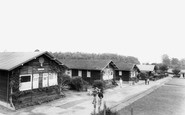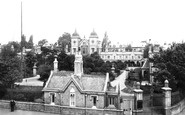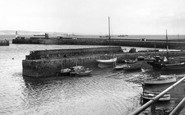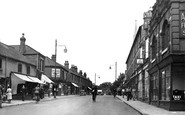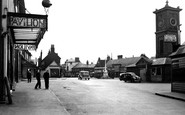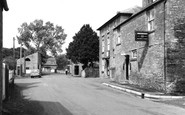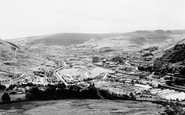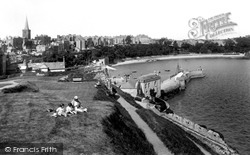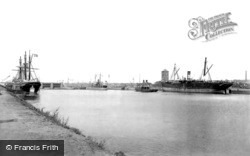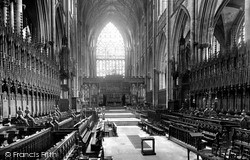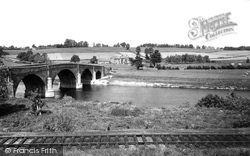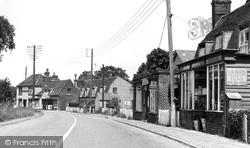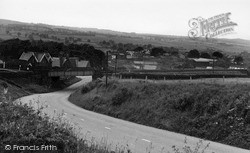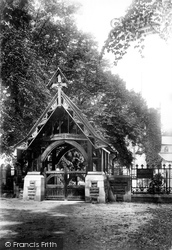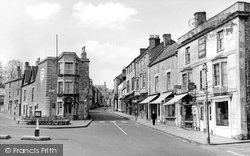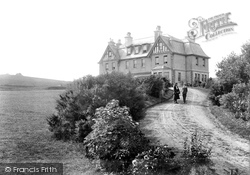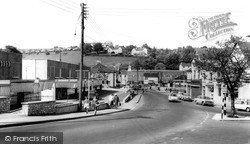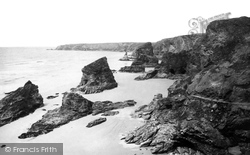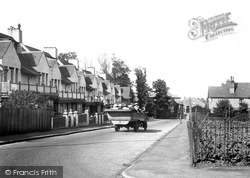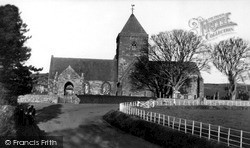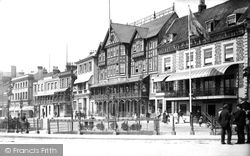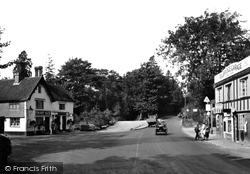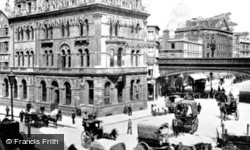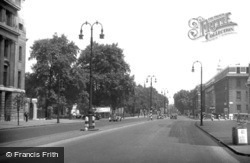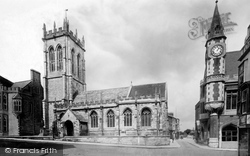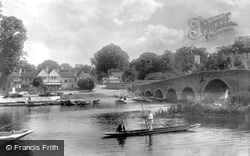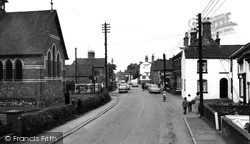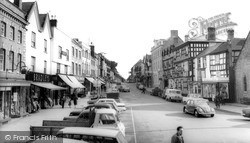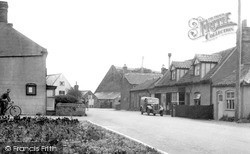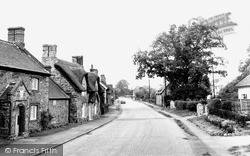Places
2 places found.
Those places high-lighted have photos. All locations may have maps, books and memories.
Photos
3 photos found. Showing results 241 to 3.
Maps
29 maps found.
Books
1 books found. Showing results 289 to 1.
Memories
1,365 memories found. Showing results 121 to 130.
Home Sweet Home
I lived at Pilgrims Wood. It was a social services children's home in 1979. I was 16 years old. My mother signed me into care at 2 days old until I was 18 years old. I loved the home and the grounds it was in. You could see the hogs ...Read more
A memory of Guildford in 1979 by
Hexham Camp 1941
Hello Alan, I was interested in your comments about the camp. Are you sure you were there in 1940? I was trying to see the rest of your article but somehow I couldn't get the rest of it. You didn't say what school you attended and ...Read more
A memory of Hexham in 1940 by
Waterman's Almhouses
As a small child, I lived in Beckenham, and we used visit my grandmother who lived in a flat in Queen Adelaide Court. From her lounge window we could see the Almshouses. At that age I did not have any real understanding of what ...Read more
A memory of Penge in 1965 by
The Old Quay, Newlyn
This photograph shows "The Old Quay" which was a medieval construction inside the outer arms of the Newlyn Harbour. Behind the Old Quay is the South Pier and the extreme end of the North Pier shows to the left of the picture (the ...Read more
A memory of Newlyn in 1955
Boyhood Memories
I was born in 89 Abbot Street, just off Sunderland Road, in 1932, then we moved to the Gateshead end of Redheugh Bridge. When the Second World War started we moved to 20 Brussel Street. The Davidson family lived in the flat above ...Read more
A memory of Gateshead in 1940 by
Lofthouse's Newsagents
So I see it now again after so many years the shop on the corner with that sign Lofthouse's Newsagents above the entrance I went under many times to collect my comics hot from the presses of D.C.Thomson of Dundee: Beano ...Read more
A memory of Worksop by
My Father
My father worked for BP Llandarcy from the 1960s. I was born in 1971 and some of my earliest memories are the smell of my dad coming home from Llandarcy. He worked on a machine called the catreformer. He rescued my first cat Sooty from ...Read more
A memory of Llandarcy in 1974
The Flicks
This is the first cinema I ever went to! I even went to see 'The Circus of Horrors' X-rated film here, I was smuggled in by my mum and her friend Long Lil (Lillian Smith), it's ok, I've had no real side effects from it, ha ha. I think I ...Read more
A memory of Hoddesdon by
Walk About
Now living in Australia - Arriving back to visit relatives, a previous life time of my walk about ways seems so dream-like. Living at The Greig Farm above the Wier Farm (The Wier which had been in my family forever) was the best ...Read more
A memory of Ewyas Harold in 1965 by
My Birth Place
Dear readers, Llwynpia was where I was born at the Hospital, 8th August 1947. My Mom was taken there in labour with me and I should have been born at my grand-parents house which was in Gilfach, Bargoid. At 6 weeks old my parents ...Read more
A memory of Llwynypia by
Captions
918 captions found. Showing results 289 to 312.
Below (right) we can see the remains of the ancient wall defences of the castle.
Here we see the docks with a mixed array of vessels just a year after opening. Our photographer is looking from the very spot where the Lowry Centre on Salford Quay is today.
Here we can see the huge size of the magnificent stained glass window above the high altar. Made in the 13th century, it is larger than a tennis court.
The railway line was dismantled soon after this photograph was taken and you can no longer see the river as the bank is totally overgrown with trees.
We can see the sign for the Black Lion hotel on the last building in the row. The weatherboarded cottages nearby are known as Black Lion Cottages.
Looking down the hill from above the station, we see the bridge carrying the Settle- Carlisle railway line running along the edge of the village.
You can see the iron railings around his grave at the bottom left of our picture. The church is built in Perpendicular style.
Here we can see the huge size of the magnificent stained glass window above the high altar. Made in the 13th century, it is larger than a tennis court.
Dog food and tobacco advertisements are much in evidence on the shop fronts, and we can see the Vallis Tea Rooms above the tobacconist.
We can see the tracks of a coach on the drive in this photograph.
At the bottom of Wells Hill we can see the railway station, which came with the Bath and Bristol line in 1874, succeeding a canal and tramway for carrying coal.
A difficult descent can be made to the golden sand (see the footprints, centre), but this is a very easy place to get cut off by the tide.
Here we see a charabanc on a day excursion with a full load of passengers - a popular way to see the sights.
Here we see the 15th-century cruciform church of St Mary's, its massive tower surmounted by a wooden spire.
A little along from the Town Hall we see the prestigious Cromwell Hotel, embellished with an airy cast iron balcony.
Looking north at the junction of the Crawley and Godstone roads we see the Star Inn, a much re-built 17th-century timber framed house, although little altered since the 19th century.
Behind we can see the existing Blackfriars pub next to the railway bridge. The large building on the right is Printing House Square, home of The Times.
To the right we can see the cupola of St Pancras's Church peeping above the Friends' Meeting House.
In this later view, we can see the memorial cross to the parish members who died in World War I in front of the second window from the right.
Upstream from the lock at Sonning, the 18th-century bridge spans the river, and the recreational use of the water is plain to see. The
From the south you can see the Hall’s plan clearly, with the central Great Hall behind the three timber-framed gables of Hickman’s 1597 stair and corridor addition.
Here we see the front of the Feathers Hotel on the right. The building was erected in 1565, although the top storey was added later.
Here we see the 19th-century cottages of the village; the older part is well inland, and the newer development stretches from the old centre towards the sea.
In this view, almost unchanged today, we can see the essence of a typical Charnwood village. Pretty cottages with iron latticed windows compliment thatches old and new all along the main street.
Places (2)
Photos (3)
Memories (1365)
Books (1)
Maps (29)



